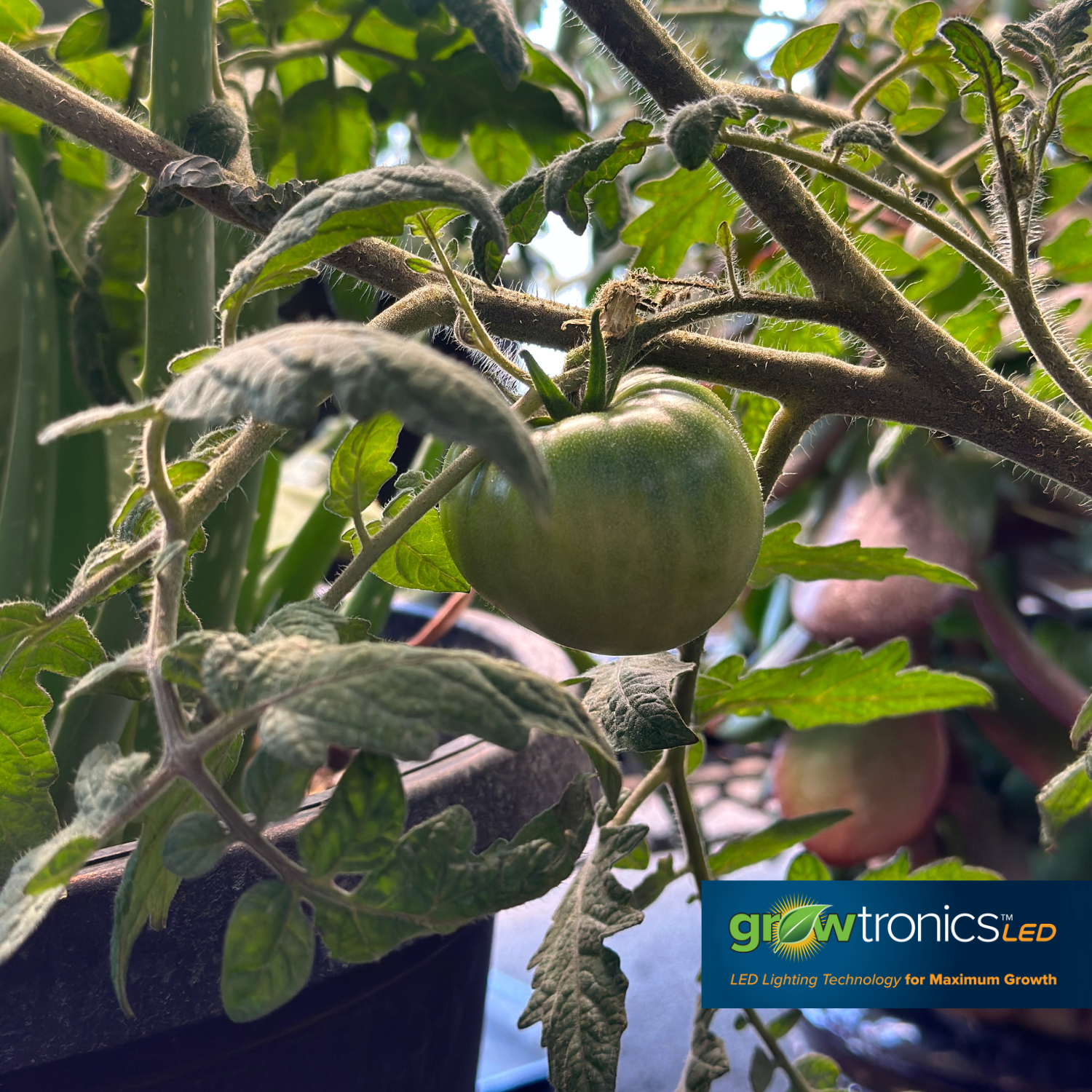Your Cart is Empty
Add description, images, menus and links to your mega menu
A column with no settings can be used as a spacer
Link to your collections, sales and even external links
Add up to five columns
Add description, images, menus and links to your mega menu
A column with no settings can be used as a spacer
Link to your collections, sales and even external links
Add up to five columns

Growing Your Best Tomatoes Yet: The Basics
April 21, 2023 4 min read
All photos used are taken by us, either from the plants in our showroom, or Tracy's greenhouse!

Tomatoes are a favorite among many gardeners, and for good reason! There are endless varieties, they’re delicious, and versatile in cooking. However, growing tomatoes can also be a bit tricky, especially for beginners. In this blog, we will provide some tips and tricks for a successful crop!

Choose the right tomato type
There are many different varieties of tomatoes, each with their own unique characteristics. When choosing a variety to grow here in Canada, the most important things to think about are climate, and along with that is growing tendency. With our growing season being quite short, it may be best to consider growing short-season varieties, often indeterminate species.
Determinate tomatoes are usually smaller in stature and are quick to begin producing fruit. These plants tend to be bushy and compact, with a maximum height of around 3-4 feet. Determinate tomatoes typically produce a large crop of fruit over a relatively short period of time, making them ideal for canning, preserving, or enjoying fresh. Once the fruit has ripened and been harvested, the plant will usually die back.
Indeterminate tomatoes, on the other hand, are a type of tomato plant that continues to grow and produce fruit throughout the growing season. These plants can grow quite tall, often reaching heights of 6-8 feet or more. Indeterminate tomatoes tend to produce smaller quantities of fruit over a longer period of time, providing a continuous harvest throughout the growing season. Because they keep producing fruit until the first frost, indeterminate tomatoes can provide a bountiful harvest of fresh tomatoes for several months.

Start early, but not too early!
Tomatoes love heat, so be careful not to plant tomatoes in the ground too soon. Here in Canada, it’s best to start your seedlings indoors and then taking them outside after the last frost. Proper grow lights will support tomatoes while they’re growing, as its critical to provide strong, direct light. It’s ideal to keep grow lights on for 14-18 hours a day to promote upright growth. Without enough balanced light, your plants will be spindly and weak.

Prune wisely!
Pruning the branches off a tomato plant can encourage it to spread out and direct more energy into ripening fruit. This is dependent on the type of tomatoes you plant: if they're indeterminate, only 1 in every 3 leaves bears fruit. Pruning the non-flowering stems will divert energy into making fruits. If your tomato is determinate, every single stem will bear fruit, and so pruning stems will actually lessen fruit production!

Harden them off
When you think your tomatoes are ready to be placed outside, you’ve got to harden them off. Do not just go outside and put them in the cool ground as tomatoes need to be acclimated to avoid cold shock. Begin by leaving plants outside for just a couple of hours a day then gradually increase their time outdoors. Plant them outside after hardening only after all danger of frost has passed.
By using Growtronics Shelfgrow grow lights, your plants will maintain a consistently dark green color due to the precise spectrum of light they emit. Additionally, because your plants will be accustomed to the intensity of the grow lights, they won't experience sun shock when moved outside. This allows for a smoother transition and reduces the risk of plant stress.
Add lots of organic matter in advance of planting. Quality garden compost can supply enough nutrients to last the whole season and will help retain moisture. Tomato plants also need a lot of space for good airflow between plants, which should help reduce the threat of disease.

Transplanting
By repotting your tomatoes deeper, the plants can make sturdier root systems, priming them to thrive. Plant deep when transferring seedlings to their own pots, and again when placing them into their final spot outdoors.
Tomato plants have a natural tendency to spread out horizontally, which is why they develop roots from their stems. However, leaving the fruits in contact with the ground can cause them to spoil quickly. To prevent this, we train the plants to grow vertically off the ground.
Indeterminate varieties need to be supported along their full length and usually need regular tying up. Use stakes, garden twine stretched taut, or tall tomato cages to keep these plants fully supported.

Water regularly!
Tomatoes need consistent moisture to grow and produce fruit. Water thoroughly; juicy tomato plants absolutely cannot be dried out. Aiming for consistent moisture is key!

Fertilize generously!
Inconsistent watering affects the fruits the most, teetering between bone-dry and then . It encourages water to rush into the fruits which causes them to split. Water-stressed plants remove nutrients from the fruit and send it to the shoots to keep the plant growing.
In conclusion, taking care of your tomato plants is crucial to ensure a healthy and fruitful harvest. By providing your plants with adequate support, nutrients, and attention, you can increase the chances of a successful harvest. Remember to regularly monitor your plants' progress and adjust your care regimen accordingly. With patience, dedication, and a bit of knowledge, you can enjoy a bountiful crop of delicious homegrown tomatoes. Happy gardening!
Subscribe
Sign up to get the latest on sales, new releases and more …
